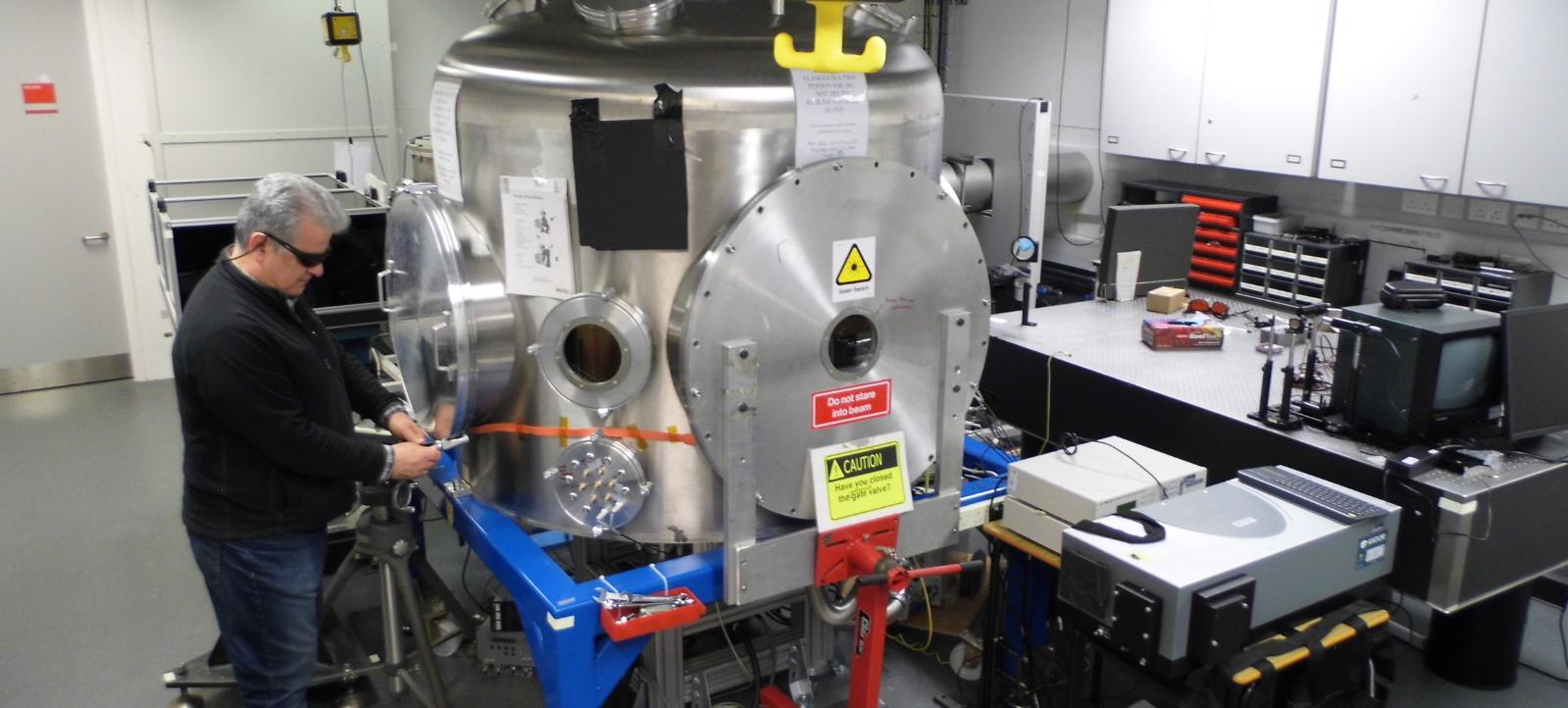TARANIS Laser
The TARANIS laser facility, named after the European Celtic god of thunder and lightning, has been at the core of the activities of the researchers from the School of Mathematics and Physics for over a decade. Funded jointly by EPSRC (Engineering and Physical Sciences Research Council) and the University, the laser delivers two optically synchronised pulses of about 20 Joules of energy per pulse in sub-ps duration, for a power of about 20 TW (about 400 times more powerful than the entire UK National Grid - but only for a very short time!). The capability of delivering laser beams of nanosecond (10-9 s,) or picosecond (10-12 s) duration enables studies of very transient, short lived phenomena.
The facility is equipped with two dedicated target areas with state-of-the art diagnostics, capable of conducting experiments simultaneously. One of the target area is dedicated to high intensity laser interaction with matter, for activities related to development and application of laser-based radiation (electron, ion, neutron and X-rays) sources, and their applications. The other target area is primarily used for studying high energy long (ns) pulse interaction with matter, either at the fundamental or second harmonic of the laser. The facility has attracted collaborations, researchers and students from around the world to work with the team, while it has played a key role in attracting major grant funding from RCUK/UKRI over the years. Furthermore, the TARANIS facility offers excellent opportunities for training personnel (PhD students/postdocs) as well as testing and developing new ideas and concepts in view of experimental campiagns on larger facilities elsewhere.

KEY PUBLICATIONS:
T. Dzelzainis et al, The TARANIS laser: A multi-Terawatt system for laser-plasma investigations, LASER AND PARTICLE BEAMS, 28, 451 (2010)
D. Doria et al, Biological effectiveness on live cells of laser driven protons at dose rates exceeding 109 Gy/s, AIP ADVANCES, 2, 011209 (2012)
K. McKeever et al, Fast-electron refluxing effects on anisotropic hard-x-ray emission from intense laser-plasma interactions, Phys. Rev. E, 91, 033107 (2015)
B. Dromey et al, Picosecond metrology of laser-driven proton bursts, Nature Communications, 7, 10642 (2016)
D.J. Corvan et al, Optical measurement of the temporal delay between two ultrashort and focussed laser pluses, Optics Express, 24, 3127 (2016)
A.Sharba et al, Generation of high contrast and high spatial quality idler from a low-gain optical parametric amplifier, Applied Optics, 55, 9341 (2016)
G. Vieux et al, An ultra-high gain and efficient amplifier based on Raman amplification in plasma, Scientific reports, 7, 2399 (2017)
H. Ahmed et al, Efficient post-acceleration of protons in helical coil targets driven by sub-ps laser pulses, Scientific reports, 7, 10891 (2017)
